Amphisarca Lists
-
Cultivation techniques for high yield of papaya
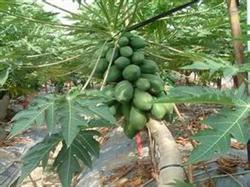
Papaya belongs to the genus Chaenomeles of Rosaceae. It is an ancient local variety in Linyi. Its fruit is rich in nutrition and has high medicinal value. In 2003, Caozhuang Town introduced 1000 mu of papaya, mainly Luo Fu and Changjun. At present, the growth is good, now China Agricultural Network will introduce the cultivation techniques of high-yield papaya in the field, such as.
2018-07-29 -
The cultivation of papaya

Planting and cultivation 1. Land selection and soil preparation shall be carried out in places with sufficient sunshine, fertile soil, moist soil and good drainage for planting. It can also be planted in the corner of the field, hillside land and in front of and behind the house. When planting in pieces, holes shall be opened according to the row spacing of 1 m ×2 m, and 5~10 kg of farm manure and soil shall be mixed into each hole as base fertilizer. Nursery ground...
2018-07-29 -
Key points of flower and fruit management in mango orchard
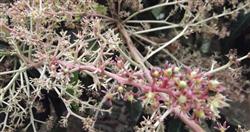
(1) use of plant growth regulators: plant growth regulators must be used in accordance with the prescribed concentration, method and time of use, and plant growth regulators registered and produced without the approval of the State shall not be used. As a plant growth regulator for controlling shoots and promoting flowers, the recommended concentration is ethephon 200 ~ 3.
2018-07-28 -
The method of soil testing and formula fertilization for mango
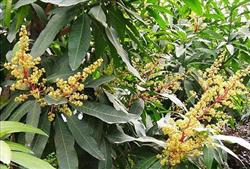
Mango flowering and fruit setting period is a very important period in mango production and management. the management measures of mango flowering and fruit setting period are as follows: 1. Arrangement of flowering branches and shoots. Remove overdense branches, shade weak branches and disease and insect branches about 2 months before flower bud differentiation, leaving only 1 or 2 shoots per branch, which can increase the crown.
2018-07-28 -
High yield technique of early Fruit in three years after planting navel Orange
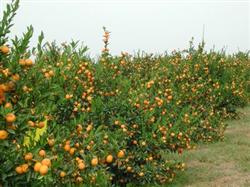
There are two kinds of fertilization for navel orange: soil fertilization and extra-root topdressing, mainly soil fertilizer. (1) soil fertilization: soil fertilization should not only benefit the root system to absorb fertilizer as soon as possible, but also prevent the root system from fertilizer damage. Therefore, fertilization should be made according to time, tree and fertilizer. Adhere to shallow root application, root deep application, spring and summer shallow application, autumn and winter.
2018-07-27 -
Symptoms and Control methods of phosphorus deficiency in Sugarcane
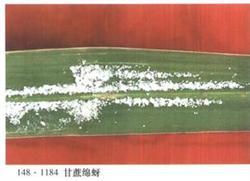
In the middle and later stages of sugarcane growth in Jinggu County, sugarcane is vulnerable to cotton aphids. If it is not controlled in time, sugarcane production will be seriously reduced. Sugarcane aphids gather on both sides of the dorsal midvein of the leaves to suck juice, wither and wither the leaves, excrete honeydew on the leaves, induce soot disease and affect the normal photosynthesis of the leaves.
2018-07-27 -
Drought resistance technology of sugarcane
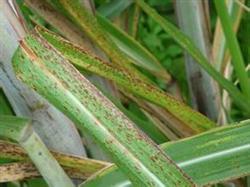
1. Select improved varieties with disease resistance and reasonable crop rotation. two。 Fertilizing the soil, increasing the application of organic fertilizer and applying more phosphorus and potassium fertilizer can reduce the occurrence of brown streak. 3. Remove the seriously diseased leaves in time, reduce the source of bacteria in the field, and control the spread. 4. Peel off the old foot leaves, occasionally remove ineffective, sick and weak plants, make the sugarcane field ventilated and reduce the sugarcane field.
2018-07-27 -
How to apply fertilizer for high yield of sugarcane
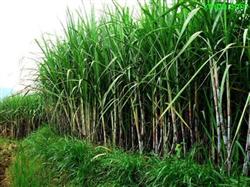
Sugarcane has a long growth period and high yield. It can generally produce 5000-8000 kg of sugarcane per mu. It absorbs more nutrients during the whole growth period and is one of the crops that need a large amount of fertilizer. According to research, for every 1000 kg of sugarcane, it is necessary to absorb 1.5-2kg of nitrogen, 1-1.5kg of phosphorus, 2-2.5kg of potassium and 0.75 of calcium from the soil.
2018-07-27 -
Six points of sugarcane can be planted in winter with high yield.
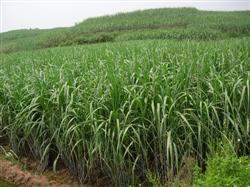
Planting sugarcane in winter can not only be high-yielding, early-maturing, but also stagger in farming season, it is easy to arrange land stubble, sugarcane species are also easy to solve, and the yield per 667 square meters is 5% higher than that of spring-planted sugarcane. 1. Land preparation should select plots with deep soil layer, middle and upper fertility, loose soil and strong water retention. After deep ploughing and fine harrowing, the row spacing is 90.
2018-07-27 -
Six measures to improve the high yield of sugarcane planted in winter
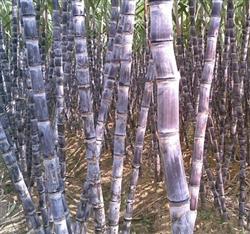
First, timely fertilization: fertilizing after emergence combined with the first weeding, applying diluent fertilizer in the second field growth period combined with each soil cultivation, applying foliar fertilizer and balance fertilizer in time for the third time, and spraying new high-fat film each time, the limited component rate of fertilizer was greatly increased. Second, cultivate the soil and fix the seedlings: generally, the soil should be cultivated 4 times a year.
2018-07-27 -
Opinions on production management of cantaloupe in greenhouse at present
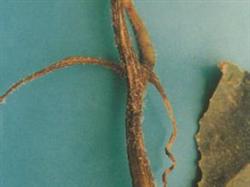
This is cantaloupe suffering from a typical vine blight or muskmelon black rot. In general, the initial symptoms are mostly in the vine joint, and there are light yellowish-green oil stains, and the disease often secretes russet colloid, which becomes a dark brown mass after drying. In the later stage, the disease spot is dry and sunken, and the surface is pale and fragile. Prevention and control methods: 1, cultivation.
2018-07-27 -
Spring cultivation techniques of cantaloupe in greenhouse

Cantaloupe is favored by the general public because of its rich nutrition, sweet taste, cool summer heat and other effects. Since 2002, with the technical support of Wu Mingzhu, academician of * * Hami Melon Research Center, Hami melon has been successfully introduced, demonstrated and popularized in Jiading District, and Hami which is more suitable for the climatic characteristics of the southern region has been selected.
2018-07-27 -
Technical opinions on protected cultivation of Hami Melon in Spring
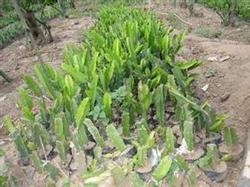
Pitaya has produced succulent stem plants in the cactus family for many years, with a height of more than 2 meters, illusory growth in very soft, loose and fertile sand, avoid waterlogging, 28 ℃ to 38 ℃ grow well. First, the cuttage is the most suitable for spring and summer, the cuttings should choose stem nodes with full growth, and the discarded branches can also be used for cuttings.
2018-07-27 -
Chemical control of heart rot of pineapple

The disease is mainly harmful to seedlings and can also be used in adult plants. At the initial stage of the damaged plant, the leaves were still green, only the leaves were slightly dark and dull, and the heart leaves were yellow and white. Since then, the leaf color has gradually changed to yellow or reddish yellow, the leaf tip has dried up, and the base of the leaf has a water-stained rotten surface. The main feature of the disease is that the core leaf can be pulled up easily. ...
2018-07-26 -
Control methods of pineapple heart rot
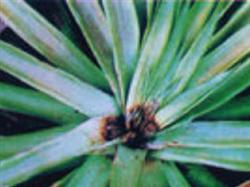
The disease is mainly harmful to seedlings and can also be used in adult plants. At the initial stage of the damaged plant, the leaves were still green, only the leaves were slightly dark and dull, and the heart leaves were yellow and white. Since then, the leaf color has gradually changed to yellow or reddish yellow, the leaf tip has dried up, and the base of the leaf has a water-stained rotten surface. The main feature of the disease is that the core leaf can be pulled up easily. ...
2018-07-26 -
Control of brown rot of pineapple small fruit
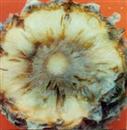
Pineapple brown rot, also known as black heart disease, is a common disease in pineapple growing areas in the world, especially Cain pineapple. The disease mainly harms the mature fruit, symptoms: the appearance of the injured fruit is no different from the healthy fruit, but when cut open, you can see the symptoms. The infected fruit turns brown or black.
2018-07-26 -
Practical cultivation techniques of pineapple
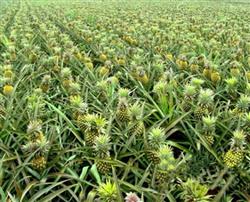
Pineapple, also known as pineapple, English name Pineapple, belongs to the pineapple family, pineapple genus, is a perennial monocotyledonous herb, growing on the ground, the fruit is an aggregate fruit formed by the aggregation of most small fruits, generally weighing 1Mel 1.5kg. Pineapple is a tropical fruit, native to Central and South America, pineapple fruit is nutritious, fruit juice is not.
2018-07-26 -
Cultivation and management techniques for high yield and high quality of pineapple
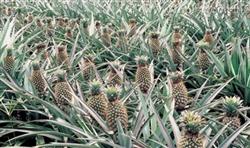
First, selected and prepared pineapple is a tropical crop, which is warm, moist, soft and fertile, while afraid of frost, drought, stickiness and barren. The county has a tropical climate and is the most suitable ecological area for pineapple growth. When arranging the planting of pineapple, it is appropriate to choose deep, soft, moist and organic soil.
2018-07-26 -
Introduction to the symptoms of grape downy mildew
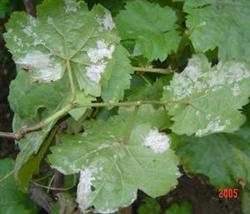
Symptom recognition: it is a fungal disease, mainly harmful to leaves, new shoots and young fruits. The injured part of the leaf first produces a yellowish brown water-immersed spot with an unclear edge, which gradually expands into an irregular or slightly round yellow brown spot with a diameter of 1 cm to 3 cm. The boundary of the lesion is unclear, and multiple spots can be connected into large spots and wet.
2018-07-25 -
Fertilization methods of Myrica rubra
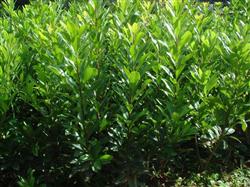
Adult trees can use strip ditches and burrows, but ditches (holes) should be dug to a depth of 20 cm near the crown drip line. Fence fertilizer and compost should be applied deeply, chemical fertilizer can be applied shallowly, and soil should be covered after application. Fertilization range to the main rod as the center of disc fertilization, the size of the tree plate is similar to the crown, shallow inside and deep, about 20-30 cm deep, can also be used ring.
2018-07-24
